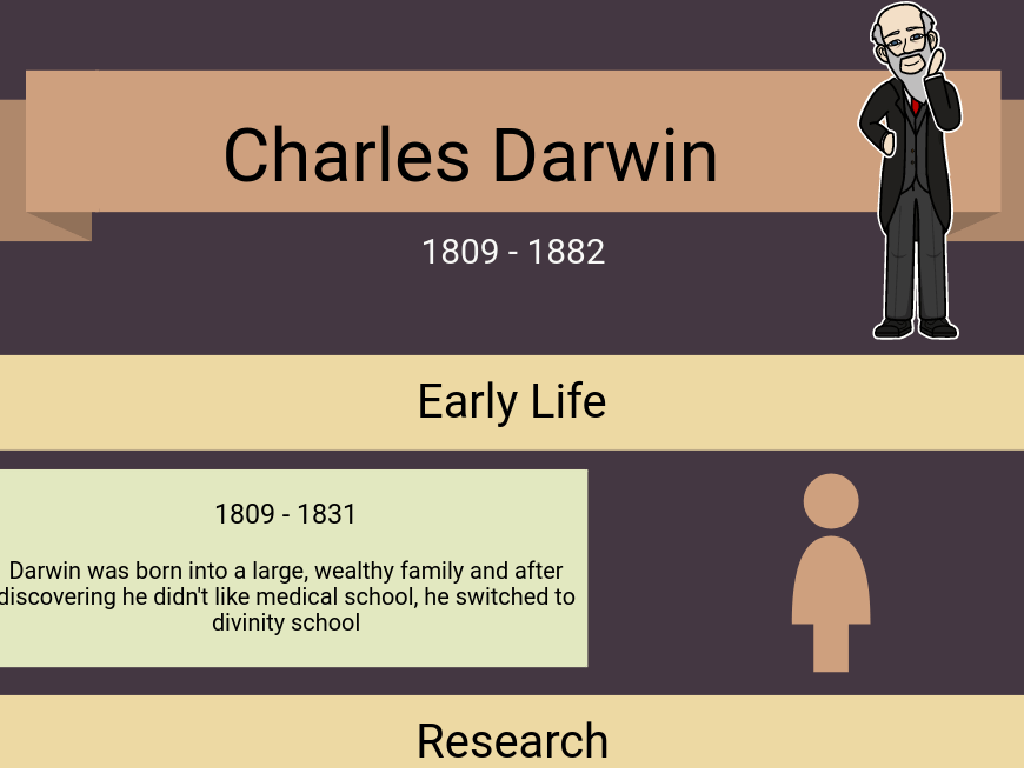Electromagnetic Radiation
Subject: Science
Grade: High school
Topic: Physics
Please LOG IN to download the presentation. Access is available to registered users only.
View More Content
Introduction to Electromagnetic Radiation
– What is Electromagnetic Radiation?
– Energy traveling through space as waves or particles.
– Waves in Physics
– Waves carry energy; key concept in physics.
– Significance of EM Waves
– EM waves are vital for communication, medicine, and more.
– Today’s Lesson Overview
|
This slide is designed to introduce high school students to the concept of electromagnetic radiation within the broader context of physics. Begin by explaining electromagnetic radiation as a form of energy that can travel through space, either as waves or particles. Highlight the fundamental nature of waves in physics, emphasizing their role in transferring energy. Discuss the significance of electromagnetic waves in various fields such as communication, medical imaging, and astronomy. The overview of today’s lesson should set the stage for a deeper dive into the properties, uses, and implications of electromagnetic radiation in both science and everyday life. Encourage students to think about how electromagnetic waves impact their daily activities, such as using a microwave or a cellphone.
Understanding Electromagnetic Radiation
– Define Electromagnetic Radiation
– Energy traveling through space as waves or particles
– Explore the Electromagnetic Spectrum
– Range of all types of EM radiation, from radio waves to gamma rays
– Everyday Electromagnetic Waves
– Radio: Broadcasting, Microwaves: Cooking, Infrared: Remote controls
– Applications in daily life
|
This slide introduces the concept of electromagnetic radiation, a fundamental phenomenon in physics. Begin with a definition, explaining that it encompasses a spectrum of waves with electric and magnetic properties. Illustrate the spectrum, highlighting the range from low-frequency radio waves to high-frequency gamma rays. Provide relatable examples such as radio waves for communication, microwaves for cooking, and infrared used in remote controls. Discuss how these applications impact daily life, fostering an understanding of the practical relevance of electromagnetic waves. Encourage students to think of additional examples and consider the safety aspects related to different types of electromagnetic radiation.
Properties of Electromagnetic Waves
– Wave speed, wavelength, and frequency
– Speed of light (c) is constant at 3×10^8 m/s; frequency (f) and wavelength (») are inversely related.
– Energy transfer in waves
– Waves carry energy without transporting matter, like sunlight warming the Earth.
– Wavelength vs. frequency relationship
– As wavelength increases, frequency decreases and vice versa, given by c = »f.
|
This slide aims to explain the fundamental properties of electromagnetic waves, which are crucial for understanding how light and other forms of electromagnetic radiation behave. The speed of light is a constant in a vacuum and relates to how fast energy can be transferred. The energy transfer through waves is a key concept, illustrating how electromagnetic waves can carry energy across empty space. The inverse relationship between wavelength and frequency is a central principle in physics, governed by the equation c = »f, where c is the speed of light, » is the wavelength, and f is the frequency. This relationship is foundational for understanding the electromagnetic spectrum and the behavior of different types of radiation.
Exploring Electromagnetic Waves
– Radio waves: communication
– Used in broadcasting, cell phones, and satellites.
– Microwaves: cooking, radar
– Used in microwave ovens and radar technology.
– Infrared: remote controls, heat
– Used in night-vision equipment and to keep food warm.
– UV, X-rays, Gamma: medical use
– Ultraviolet for sterilization, X-rays for imaging, Gamma rays in cancer treatment.
|
This slide provides an overview of the different types of electromagnetic waves and their practical applications. Radio waves are essential for wireless communication. Microwaves are not only for cooking but also crucial in radar systems. Infrared radiation has a variety of uses, from remote controls to thermal imaging. The higher energy waves like ultraviolet, X-rays, and gamma rays have specialized uses, particularly in the medical field for sterilization, imaging, and cancer treatment. Encourage students to think about how these different types of waves impact their daily lives and the technological advancements they enable.
Applications of Electromagnetic Radiation
– Radio and TV communication
– Uses radio waves to transmit audio and visual data
– Medical uses: X-rays and MRI
– X-rays image bones; MRI uses radio waves for detailed body scans
– Astronomy and electromagnetic waves
– Telescopes detect various wavelengths to study celestial bodies
– Exploring practical impacts
|
This slide explores the diverse applications of electromagnetic radiation in everyday life and science. Students should understand how radio and TV broadcasts rely on electromagnetic waves to transmit information. In medicine, X-rays and MRI scans are crucial diagnostic tools that use different parts of the electromagnetic spectrum. In astronomy, telescopes equipped to detect various electromagnetic wavelengths provide insights into the composition and behavior of celestial bodies, enhancing our understanding of the universe. Encourage students to think about other applications of electromagnetic radiation and discuss the science behind them.
Dangers of Electromagnetic Radiation
– Health risks of high-energy radiation
– Exposure can lead to tissue damage and cancer.
– Safety measures and regulations
– Guidelines limit exposure, enforce protective measures.
– Balancing benefits and risks
– Weighing medical uses against potential harm.
– Responsible use of technology
|
This slide aims to educate students on the potential dangers associated with electromagnetic radiation, particularly from high-energy sources. It’s crucial to discuss the health risks, such as tissue damage and increased cancer risk, that can arise from prolonged or intense exposure. Emphasize the importance of safety measures and regulations that are in place to protect the public, including guidelines for exposure limits and the use of protective equipment. Encourage a discussion on how society balances the undeniable benefits of electromagnetic radiation in medical and technological applications with the potential risks. Finally, touch on the importance of responsible use of technology to minimize unnecessary exposure.
Class Activity: Exploring the Electromagnetic Spectrum
– Create your own spectrum with prisms
– Identify various electromagnetic waves
– Find gamma rays, X-rays, UV, visible light, IR, microwaves, radio waves
– Discuss observations with classmates
– Reflect on the insights gained
|
This class activity is designed to provide hands-on experience with the electromagnetic spectrum. Students will use prisms to split light and observe the visible spectrum. They should also identify different types of electromagnetic waves using lab equipment. After the practical exercise, facilitate a discussion where students can share their observations and insights. Encourage them to describe the spectrum they created and the characteristics of the different waves they identified. Possible activities include measuring the wavelength of visible light, comparing the energy of different waves, and discussing the applications of each type of wave in real life. This will help solidify their understanding of the electromagnetic spectrum and its relevance to everyday technology.
Electromagnetic Radiation: Summary & Q&A
– Recap key EM radiation concepts
– Review of wavelength, frequency, and spectrum
– EM waves’ role in science & tech
– Use in communication, medicine, and more
– Encourage student questions
– Clarify any doubts
|
This slide aims to summarize the key points of electromagnetic radiation, emphasizing its significance in various scientific and technological fields. Begin with a brief recap of the main concepts such as wavelength, frequency, and the electromagnetic spectrum. Highlight the practical applications of EM waves in everyday technology, medical imaging, and communication systems. Open the floor for students to ask questions, ensuring they feel comfortable seeking clarification on any aspect of the topic they might not fully understand. Prepare to address common areas of confusion and have examples ready for a more in-depth explanation if needed.






